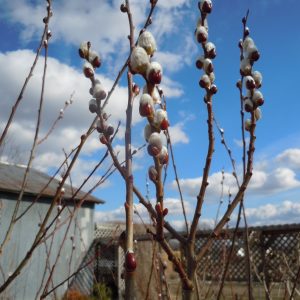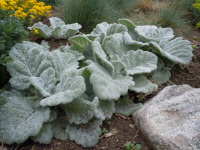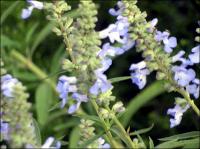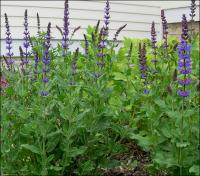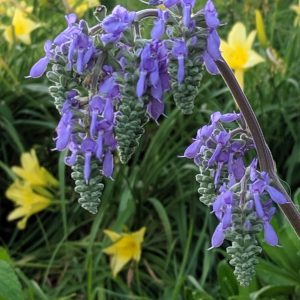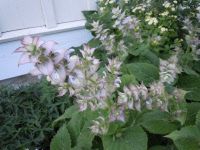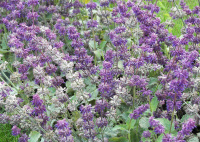Shop
Showing 625–632 of 778 results
-
Salix discolor Pussy willow Z 4-8
Grown for its fuzzy catkins appearing in late winter before the leaves emerge
ARCHIVED
Note: This is a plant not currently for sale. This is an archive page preserved for informational use.
Grown for its fuzzy catkins appearing in late winter before the leaves emerge
Size: 15-20’ x 12-15’
Care: full sun, prefers moist soil but tolerates well-drained soil
Native: E. No. America incl. WI
Wildlife Value: Important food source for many pollinator bees incl. honey bees. Pussy willows attract queens looking for a location for a new colony. Host to caterpillars of cecropia moth and red-spotted purple, tiger swallowtail & viceroy butterflies.The name Salix is from “salio” meaning “to leap or dance, because of its quick growth.” Gardeners Dictionary, 1768. This species introduced to cultivation by German plant hunter Gotthilf Henry Ernest Muhlenberg in late 1700’s-early 1800’s. Willows contain salicin, the pain-killer in aspirin, and used since ancient Greece to relieve pain.
-
Salvia amplexicaulis Stem-clasping sage Z 4-8
Erect spikes of two-lipped, purple flowers with reddish-purple bracts in summer. Leaves are fragrant.
Erect spikes of two-lipped, purple flowers with reddish-purple bracts in summer. Leaves are fragrant.
Size: 48" x 36"
Care: Sun to part shade in moist well-drained soil. Deadhead for rebloom.
Native: Southeastern Europe
Wildlife Value: attracts butterflies, deer resistant.Salvia is from the Latin “salveo” meaning “to heal” referring to the plants ancient medicinal uses. This species collected before 1791.
-
Salvia argentea Silver sage Biennial or short lived perennial Z 5-7
Large rosettes of the woolliest silver leaves. So soft you want to pet them. This one’s for the leaves, not the flowers. It dies after flowering so cut back flower stems to prevent flowering, or, if you want to save seeds let it flower.
Large rosettes of the woolliest silver leaves. So soft you want to pet them. This one’s for the leaves, not the flowers. It dies after flowering so cut back flower stems to prevent flowering, or, if you want to save seeds let it flower. It self-seeds sometimes.
LIMITED QUANTITIES AVAILABLE, LIMIT OF 1 PER CUSTOMER.
Size: 2-4’ x 12"
Care: Sun in well-drained soil.
Native: Europe & No. Africa around Mediterranean
Awards: Royal Horticultural Society Award of Garden Merit; Plant Select® Central Rocky Mountain regionSalvia is from the Latin “salveo” meaning “to heal” referring to the plant’s ancient medicinal uses. Collected before 1750. The Garden reported it was introduced in 1768. Liberty Hyde Bailey said its, “white woolly foliage makes it a very decorative plant.” (1933).
-
Salvia azurea ‘Grandiflora’ Blue sage, Prairie sage Z 5-9
August – October sky blue racemes. One of internationally known garden designer Piet Oudolf’s 100 “MUST HAVE” plants, Gardens Illustrated 94 (2013)
August – October sky blue racemes. One of internationally known garden designer Piet Oudolf’s 100 “MUST HAVE” plants, Gardens Illustrated 94 (2013)
Size: 4’ x 24-36”
Care: Sun, moist well-drained soil
Native: MI to e. NE, s. AR & TX, Wisconsin native
Wildlife Value: Primarily long tongued bees such as Bumble bees visit and pollinate the plants. Host for caterpillars of Hermit Sphinx butterflyNative Americans roast or popped the seed of Blue sage as a grain. American garden cultivation since 1700’s. William Robinson, father of the mixed perennial border, praised the Blue sage as “one of the finest (perennials from North America) in its flowers, borne as dense spikes of a beautiful pale blue during September and October.”
-
Salvia nemorosa Meadow sage, Balkan clary Z 5-7
Purple/lavender spire dense with flowers June to September
Dense purple spires flower June to September (if cutback after 1st flush of flowers).
Size: 36" x 24"
Care: full sun in moist well-drained to well-drained soil. Drought tolerant.
Native: Europe to Central Asia.
Wildlife Value: attracts butterflies & hummingbirdsSalvia is from the Latin word salveo meaning “to heal” referring to the plant’s ancient medicinal uses. Collected before 1753.
-
Salvia nutans Nodding sage Z 5-8
Nodding clumps of sky blue flowers high over basal leaves, flower in late spring-early summer.
OUT OF STOCK
Nodding clumps of sky-blue flowers high over basal leaves, flower in late spring-early summer.
Size: 3-4’ x 18”
Care: sun to part shade in moist, well-drained soil.
Native: Balkans
Wildlife Value: attracts bees & butterflies seeking pollen and nectar. Deer resistant.Collected before 1753. Introduced to gardens in 1780 by Peter Simon Pallas (1741-1811) Berlin botanist who collected extensively in Russia. Grown in nursery of Joseph Knight, King’s Road, London. Pictured in Curtis’s Botanical Magazine Vol. 50, 1822.
-
Salvia sclarea Clary sage Reseeding Biennial Z 5-9
Extraordinary pastel panicles of cream, blue or pink, bi-toned bracts whorl around the stem spring – summer
Extraordinary pastel panicles of cream, blue or pink, bi-toned bracts whorl around the stem spring – summer
Can not ship to: Washington
Size: 3’ x 12”
Care: full sun in moist well-drained soil.
Native: Europe to Central Asia
Wildlife Value: attracts hummingbirds and butterflies. Deer resistant.Salvia is from the Latin salveo meaning “to heal” referring to the plant’s ancient medicinal uses. This species introduced to gardens from the south of Europe in 1562.
-
Salvia verticillata Lilac sage, whorley clary, Salbey Z 5-8
Muted lilac blue spikes June to October
Muted lilac blue spikes June to October, deadhead for more blooms.
Size: 24” x 18-24”
Care: sun in moist well-drained to well-drained soil. Cut back after first bloom to repeat.
Native: Spain to Ukraine, Caucasus to Iran
Wildlife Value: Butterfly magnet.Salvia is from the Latin “salveo” meaning “to heal” referring to the plant’s ancient medicinal uses. This species collected before 1753. Grown at America’s 1st botanic garden, Elgin Botanic Garden 1811.

